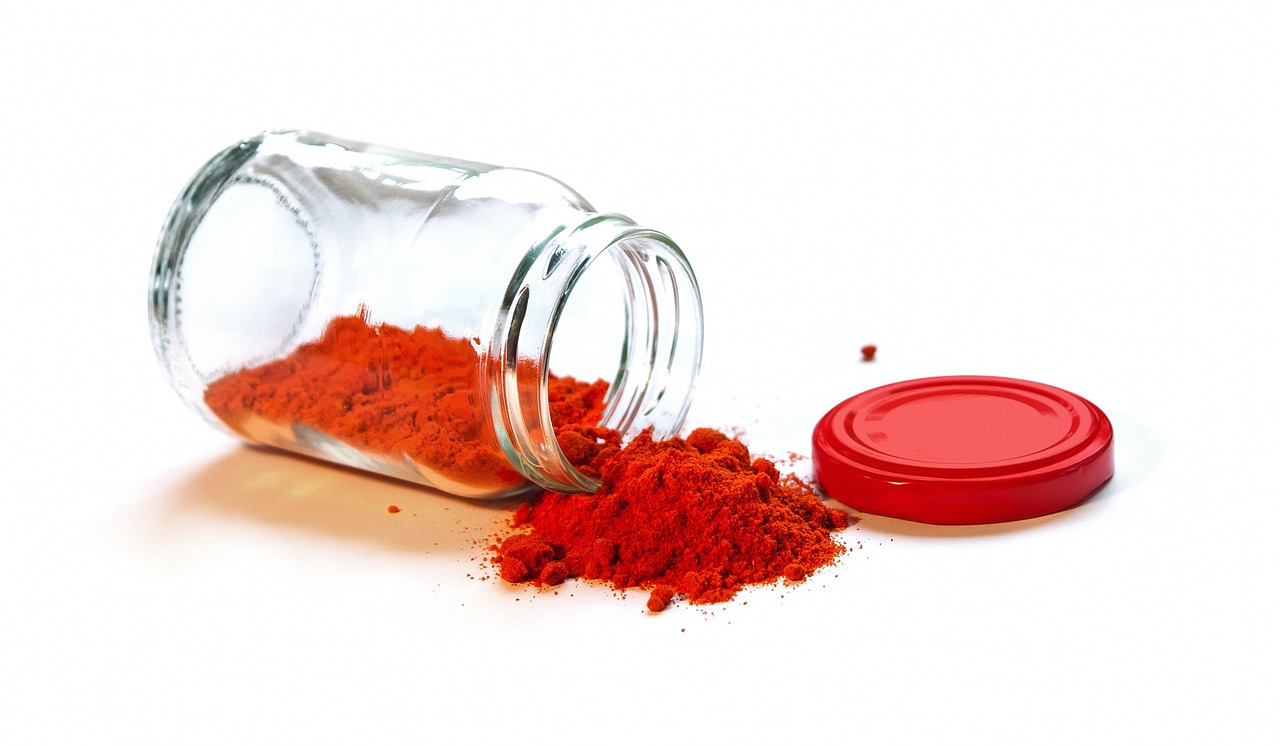Red Dye Made From Bugs
You might be surprised to learn that one of the most common natural red dyes comes from insects. This dye, known as carmine or cochineal extract, is made from tiny scale insects that live on cactus plants. Red dye made from bugs comes from the cochineal insect, which is dried, ground, and processed to create a vibrant natural pigment used in foods, cosmetics, and textiles.
You’ve likely seen this color in yogurt, candy, or lipstick without realizing its insect origin. The process of farming and harvesting these insects has been practiced for centuries and continues today, though modern science is exploring new ways to produce the same pigment without insects.
Understanding how this dye is made, where it’s used, and how it affects health and sustainability helps you make more informed choices about what you use and eat.
What Is Red Dye Made From Bugs?
Red dye made from bugs comes from a small insect that produces a natural pigment used in foods, cosmetics, and textiles. The color comes from a compound found in the bodies of these insects and is valued for its strong, stable red color that synthetic dyes often try to replicate.
The Role of Cochineal Insects
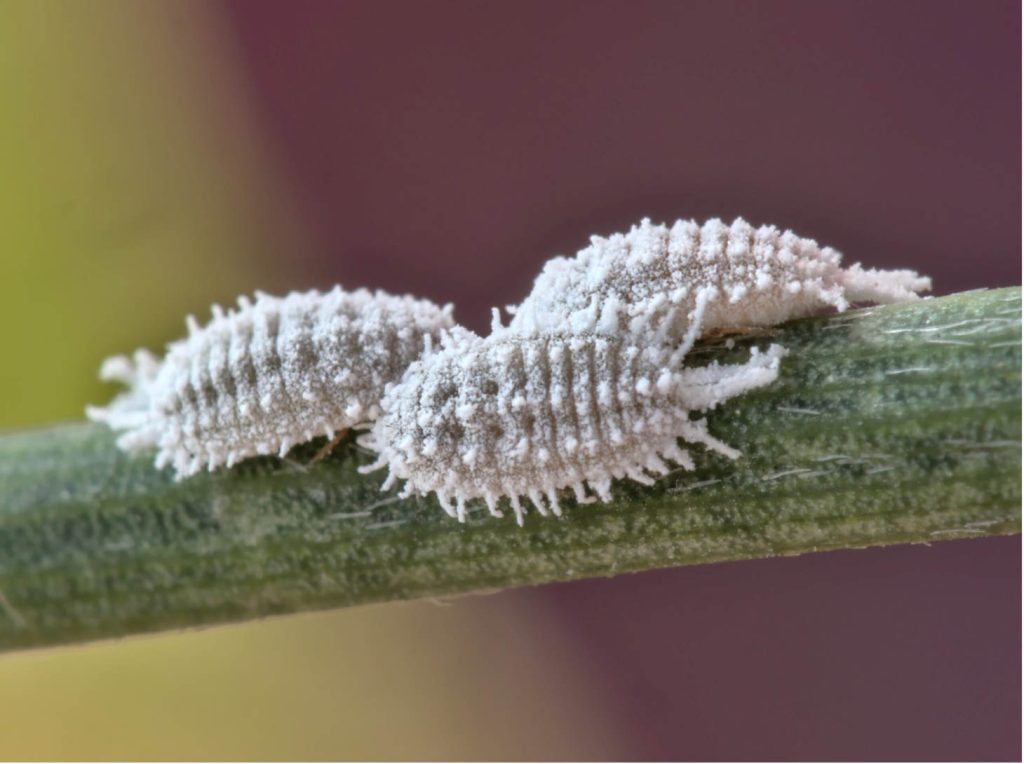
You get this natural dye from cochineal insects (Dactylopius coccus), a type of scale insect that lives on prickly pear cacti. Only the female cochineal insect produces the red pigment. Farmers collect and dry these insects before processing them into a fine powder.
It takes about 70,000 insects to produce one pound of dye. The result is cochineal extract, also known as E120, Natural Red 4, or carmine. This dye has been used for centuries in textiles, art, and food coloring.
You can find carmine in products such as yogurt, candies, fruit drinks, and lipsticks. Because it comes from insects, it is not suitable for vegan or kosher diets. Still, many manufacturers use it because it provides a deep, stable red color that resists fading.
Carminic Acid and Red Pigments
The main coloring compound in cochineal dye is carminic acid, which makes up about 17-24% of the dried insect’s body. When mixed with aluminum or calcium salts, it forms carmine, a bright red pigment used in food dyes and cosmetics.
Carminic acid protects the insects from predators, but for humans, it acts as a natural pigment. It produces shades ranging from light pink to dark crimson, depending on how it’s processed. Related compounds, such as kermesic acid, appear in other natural red dyes.
This pigment is known for its stability under heat and light, which makes it useful in products that need long shelf lives. You might see it labeled as cochineal extract or E120 on ingredient lists.
Comparison to Synthetic Dyes
You often see synthetic dyes like Red 40 (Allura Red AC) used instead of carmine. These dyes come from petroleum-based chemicals, not insects. Synthetic pigments are cheaper to produce, consistent in color, and suitable for vegan diets.
However, some consumers prefer natural dyes because they avoid artificial additives. Others choose synthetic dyes to prevent allergic reactions that can occur with cochineal or carmine.
| Type | Source | Common Name | Notes |
|---|---|---|---|
| Natural Dye | Cochineal insects | Carmine / E120 | Derived from Dactylopius coccus |
| Synthetic Dye | Petroleum compounds | Red 40 / Allura Red AC | Not derived from insects |
Both types of dyes serve similar purposes in food and cosmetics, but their origins, cost, and acceptability differ depending on your preferences and needs.
Life Cycle and Harvesting of Cochineal Insects
You can trace the vivid red dye known as cochineal to a small insect that lives on cactus plants. Understanding its habitat, growth, and collection helps you see how this natural color source depends on careful timing and traditional methods.
Habitat and Host Plants
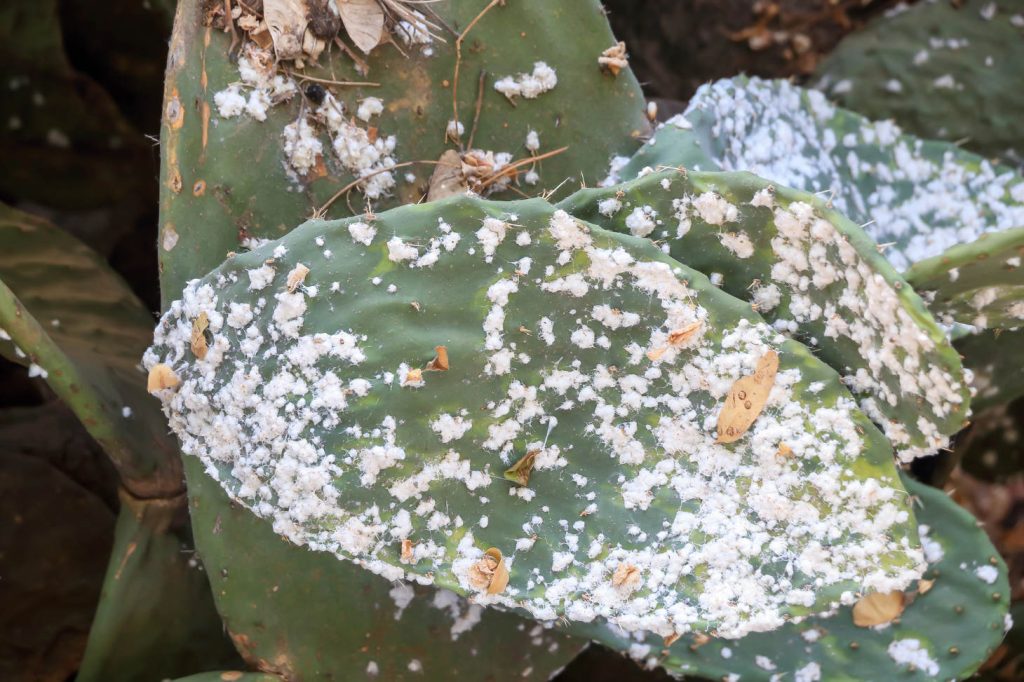
Cochineal insects (Dactylopius coccus) live mainly on Opuntia species, often called prickly pear or nopal cactus. These cacti provide both shelter and food for the insects. The female cochineal attaches herself to the cactus pads and feeds on the plant’s sap.
Warm, dry climates support the insects best. You often find them in regions of Mexico, Peru, and the Canary Islands. The insects thrive where daytime heat and low humidity allow the cactus to grow strong and healthy.
Female cochineals produce a waxy coating that protects them from sunlight and predators. They remain stationary while feeding and producing the red pigment carminic acid. Males live only a short time, long enough to mate before dying, while females continue to grow and reproduce.
Farming and Collection Methods
Farmers cultivate cochineal by placing infected cactus pads on healthy plants. This process spreads the insects naturally. You can identify active colonies by their white, cotton-like appearance on the cactus surface.
Harvesting focuses on the female cochineal insect, which contains the most pigment. Collectors remove them gently using small brushes or scraping tools. Timing matters, harvesters wait until the insects reach peak maturity, when pigment levels are highest.
After collection, the insects are cleaned and dried. Traditional methods include sun-drying, baking, or steam drying, each affecting the final color tone. It can take around 70,000 insects to produce one pound of dried cochineal material, showing how labor-intensive the process is.
Processing Into Dye
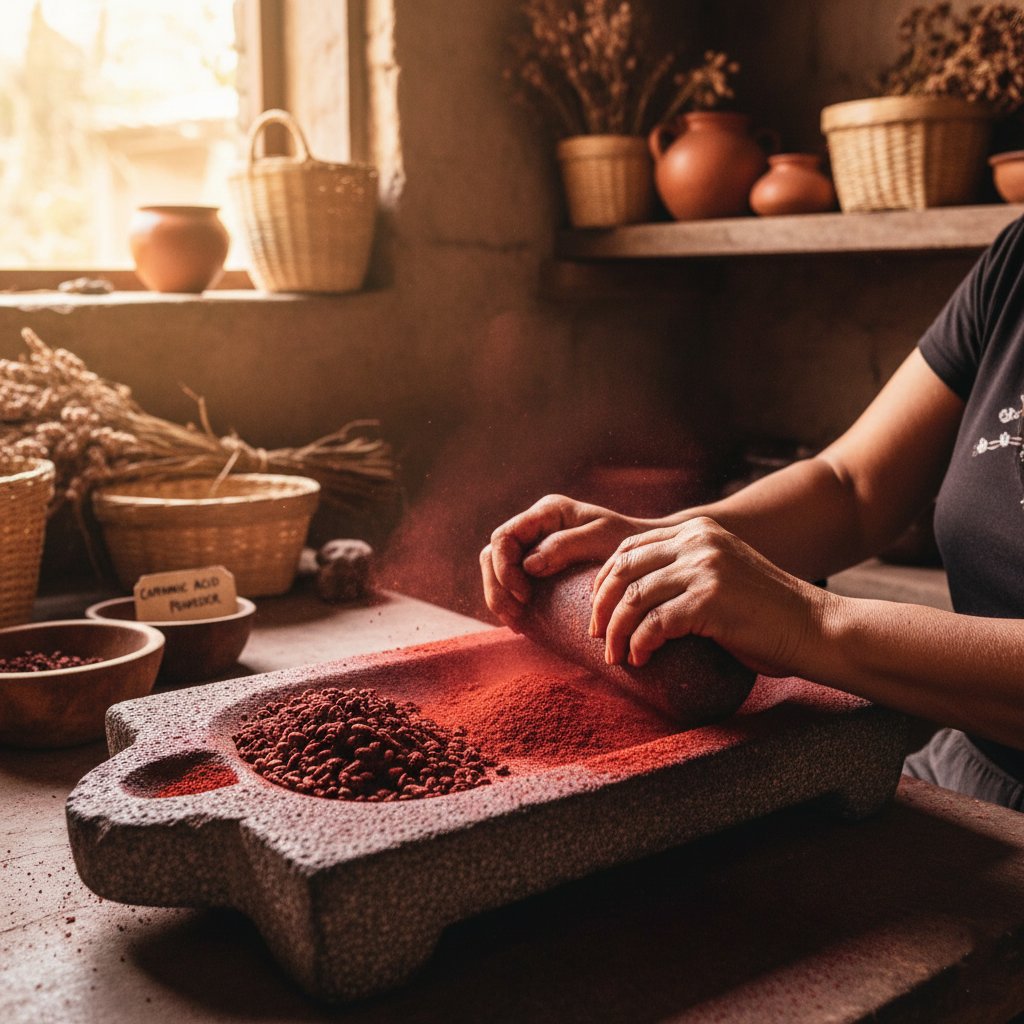
Once dried, the insects are ground into a fine powder using tools such as a metate, a carved volcanic stone. The powder contains carminic acid, the compound responsible for the deep red color.
Producers extract the pigment by mixing the powder with water or alcohol. The solution is filtered, purified, and sometimes treated with minerals to create different shades. The result becomes cochineal extract or carmine, depending on the level of refinement.
This dye is then used in textiles, cosmetics, and foods. Its stability and strong color make it valuable even today, especially for those seeking natural coloring options.
Uses and Applications of Cochineal-Based Red Dye
You can find cochineal-based red dye in many everyday products. It appears in foods, drinks, cosmetics, and textiles because it provides a stable, natural red color that lasts longer than many plant-based dyes. Its versatility and robust color make it a preferred natural colorant, though it can cause allergic reactions in a small number of people.
Food and Beverage Coloring
You often see cochineal extract and carmine (Natural Red 4 or E120) listed on ingredient labels. These dyes color items such as yogurt, fruit juices, candy, ice cream, and baked goods. They produce shades ranging from soft pink to deep crimson, depending on concentration and formulation.
This dye resists light, heat, and acidity, which helps maintain color consistency in processed foods. Because it comes from insects, it’s not vegan, but it is valued for being natural and non-toxic.
In beverages, carmine gives fruit drinks and liqueurs a rich hue that doesn’t fade quickly. Many food producers use it to replace synthetic dyes like Red 40, which some consumers avoid.
| Common Use | Example Product | Label Name |
|---|---|---|
| Dairy | Strawberry yogurt | Carmine, E120 |
| Candy | Gummies, jelly beans | Cochineal extract |
| Drinks | Fruit punch, spirits | Natural Red 4 |
Cosmetics and Personal Care
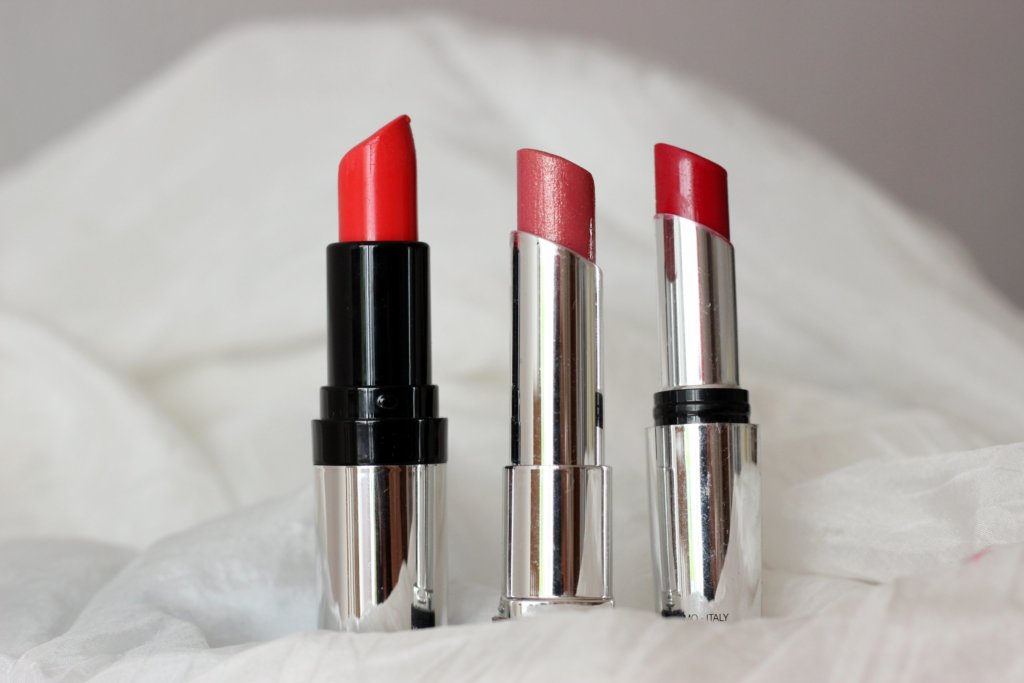
You may find cochineal pigment in lipsticks, blush, and eye shadows. Its strong red tone, sometimes called crimson lake, provides long-lasting color that blends well with other ingredients.
Manufacturers use it because it performs well in both oil- and water-based formulas. It also resists fading from light exposure, making it useful for products that need stable color.
In personal care, cochineal dye appears in soaps, lotions, and nail polishes. Some brands highlight it as a natural alternative to synthetic colorants, though others avoid it due to ethical or allergy concerns.
Examples of cosmetic uses:
- Lipstick and lip gloss
- Blush and eyeshadow
- Nail polish and tinted lotion
Textiles and Art
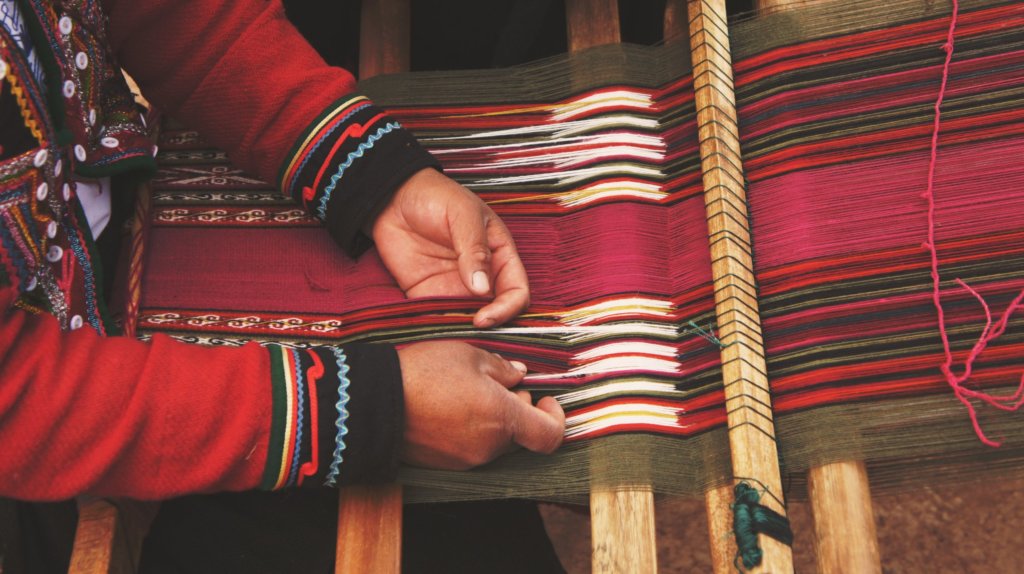
You can also find carmine dye and cochineal pigment in textiles and artworks. Historically, artisans used it to dye wool, silk, and cotton. Today, it remains popular among sustainable and traditional textile producers.
Cochineal dye produces vivid reds and pinks that remain stable through washing and sunlight. It’s used in ethical fashion and natural fiber dyeing, especially in regions like Oaxaca, Mexico, where cochineal farming continues.
Artists sometimes use cochineal-based pigments in watercolor and tempera paints. These pigments give artwork a warm red tone known for depth and durability.
Common textile and art uses:
- Hand-dyed fabrics
- Traditional weaving
- Natural art pigments and paints
Health, Safety, and Modern Developments
You may wonder how safe insect-based red dyes are and how they compare to synthetic options. The main concerns include allergic reactions, labeling for dietary restrictions, and the rise of new color technologies in food science.
Potential Allergic Reactions
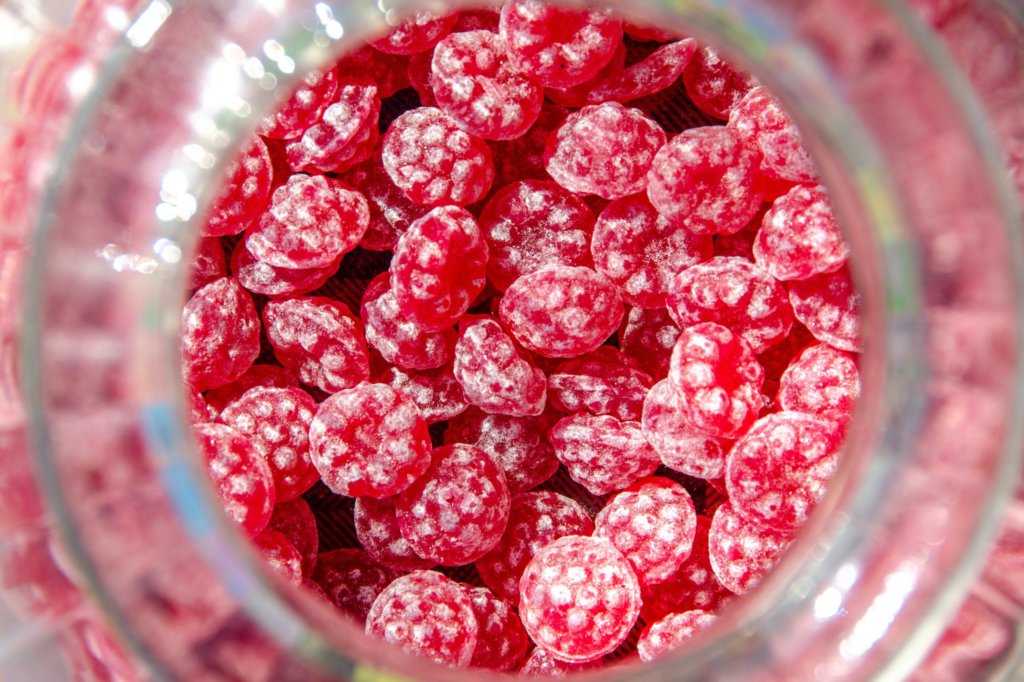
Carmine and cochineal extract can trigger allergic responses in sensitive individuals. These reactions may include hives, swelling, or breathing difficulties. Although such cases are rare, they are well-documented in medical literature.
You should know that these reactions occur because carmine contains protein residues from the cochineal insect. Your immune system can mistake these proteins as harmful, leading to an allergic response.
Manufacturers often test for purity, but no process fully removes insect proteins. People with known sensitivities should read ingredient lists carefully and avoid products listing carmine or cochineal extract.
| Risk Level | Reaction Type | Common Sources |
|---|---|---|
| Low to High | Hives, swelling, mild irritation, or anaphylaxis (rare) | Foods (yogurt, candy), beverages, pharmaceuticals, and cosmetics (lipstick) |
Labeling and Dietary Considerations
If you follow a vegan, vegetarian, or kosher diet, insect-based dyes may not align with your values or restrictions. Regulations in many countries now require clear labeling of carmine and cochineal extract on ingredient lists.
You should look for terms such as E120, natural red 4, or cochineal color. These all refer to dyes derived from the cochineal insect.
Some food producers have replaced insect-based dyes with plant pigments like beet juice or purple sweet potato extract. Others still use carmine because it provides a stable, vibrant red that resists fading during heat processing.
Consumers increasingly expect transparency. Clear labeling helps you make informed choices based on health, ethics, or dietary needs.
Synthetic and Biotechnological Alternatives
Synthetic dyes like Red 40 offer consistent color and low cost but raise safety questions. Studies have linked some synthetic pigments to hyperactivity in children and potential toxicity, prompting stricter regulations.
Food scientists now explore biotechnological methods to produce natural red pigments without using insects. One approach involves using microorganisms such as Aspergillus nidulans to synthesize color compounds in controlled environments.
These methods aim to reduce dependence on both insects and petroleum-based chemicals. You may soon see foods colored with lab-grown natural pigments that match carmine’s brightness but carry fewer ethical and allergy concerns.
Advances in food science continue to balance safety, sustainability, and consumer preference, shaping the future of food coloring.

